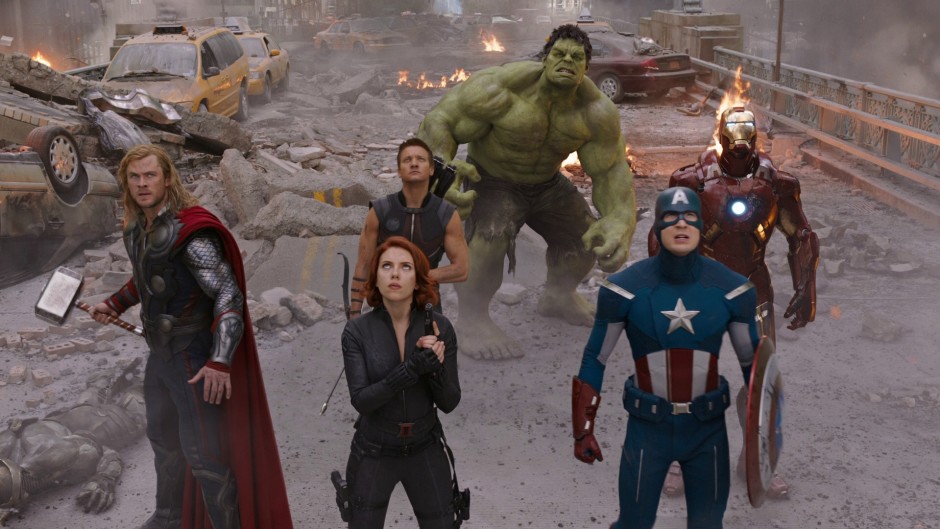If you spend your spare time (and spare cash) reading stories from the comic industry giants DC and Marvel, you’ll be no stranger to the shared universes that each company’s costume clad heroes inhabit. Characters from one series will often pop up in guest appearances in another. Sometimes this works well and other times you wish that Batman would stop trying to become a supporting character in Superman’s comics when he’s got four or five of his own comics on the go at any one time.
One of the reasons that this practise became so prevalent is the low cost; if you decide to have a crossover issue where Superman lifts Gotham into the sky so that Alfred can sweep up the crumbs accumulating under it and your readers don’t like it, you haven’t lost much. You make sure that the next issue establishes that it was all just a dream and you’re back on track.
But then Marvel decided to apply the same approach to their superhero movies. They started carefully with Nick Fury cameos in the stingers before starting to construct what has become known as the Marvel Cinematic Universe. This proved to be a success and, unsurprisingly, this spurred a rush to try and replicate this success by other companies; DC being the most significant adopter.
But is this a good idea? Movies, unlike comics, take a lot of time, manpower and money to make. Making films that partly depend on the performance of other films is rather like piling up famous oil paintings and then juggling flaming torches on a tightrope directly above them; if you pull it off, then your impressed audience will be talking about it for years to come. But if you fumble it, then you’ve just presided over a very expensive failure.
Imagine that, for example, that the solo film of one of the Avengers had bombed; comic fans were furious at the portrayal of the character and non-comic readers came away with a terrible first impression. Now imagine that you’re a Marvel executive and you’re suddenly faced with the daunting question; do you still include this character in the Avengers movie? Do you hope that pop-culture demi god Joss Whedon can turn things around for the under-performing character, or do you cut them out and endure the nerd rage for not including the character?
So as you can see, continuity connected films have a knock on effect on each other, but this isn’t a uniformly negative thing. Sometimes a strategic cameo or guest role by an already popular character can boost the appeal of a film whose script writer was going through a particularly bitter divorce when he wrote the thing. A good example of this (the cameo concept, that is, not the divorce thing) requires us to examine one of the TV based contributions to the MCU: ‘Agents of Shield’.
This show follows the adventures of Agent Coulson and his team as they run around having adventures only peripherally connected to the events that appear on the big screen. The show is solid in its own right, but as the films drive the continuity of the MCU, nothing can happen in it that would have a visible impact on the events of the films. So occasionally we have Nick Fury or Lady Sif show up for an episode in order to reassert the series’ connection to the rest of the MCU. The series would be fairly popular in its own right, but these guest appearances always make ratings jump up.
And now we get to the elephant in the room; the one area where DC’s fledgling cinematic universe has an edge over Marvel’s well-established one. You see, years ago, Marvel had followed in the venerable footsteps of Tolkien and sold the film rights to some of their most popular franchises. Unlike Tolkien, Marvel lived to regret this when Sony brought the superhero movie genre back to life with 2002’s Spider-Man. One of their most popular characters ended up becoming a film franchise worth four billion dollars and Marvel couldn’t touch a penny.
So while DC kick-started their cinematic universe with a film starring one of the most iconic superheroes ever, Marvel had to make do with no one’s favourite superhero; Iron Man. Of course, the film was a hit thanks to the easy charisma and dry snark of Robert Downey Jr, but that’s the point really. DC has their full stable of A-list heroes to work with(plus Aquaman), allowing them to make their second entry into the DCCU the wet dream of comic fans everywhere; a live action Superman/Batman team up. Meanwhile, Marvel has to scramble to rework C-list heroes to support the heavy hitters they still have the rights to (no one could have anticipated that a Guardians of the Galaxy adaptation would become a blockbuster hit).
Of course, I’m not forgetting the news that caused fan-boys everywhere to start foaming from the mouth in sheer excitement. Literally hours after my pitch for this article was greenlit, all the planets aligned and pigs took flight, heralding Sony allowing Spider-Man to appear in the MCU.
This demonstrates two things; firstly, that I should have bought a lottery ticket that night. Secondly it shows that two companies can collaborate on a cinematic universe to the benefit of both. Prior to this, Sony was trying their hardest to create their own cinematic universe by making as many Spider-Man spin offs as they could. Now, instead of trying to make the sinister six relatable enough to star in a movie, Sony can benefit from the appearance of MCU characters in Spidey’s solo films. Meanwhile, Marvel gets to use one of their most iconic heroes.
Of course, it’s not all sunshine and roses; Sony is only lending Spider-Man to Marvel and, like that petulant kid with the fancy toy we all knew growing up, they may change their mind at some point and yank him back. So this adds greater complexity to an already nebulous project; you’re already juggling the success and failure of numerous films, multiple million dollar budgets and an army of actors whose characters cannot disappear without explanation (thanks to good old continuity). So while you’re frantically negotiating with Robert Downey Junior or Scarlett Johansson to get them to renew their contracts, the last thing you need is Sony demanding that Spider-Man gets a robotic sidekick or he’s gone.
Ultimately, my point is that unified cinematic universes can work (Marvel has proved that) but that they’re high risk, high return. In a way, the rise of the cinematic universe is a bit like the Dot Com bubble; everyone is rushing to get involved, but not many people are thinking of the potential risks. I’d say it’s all going to end badly, but if 4D cinema is catching on, maybe anything is possible.



















1 Comment
I totally agree with everything that you said here. Thanks for sharing your thoughts!